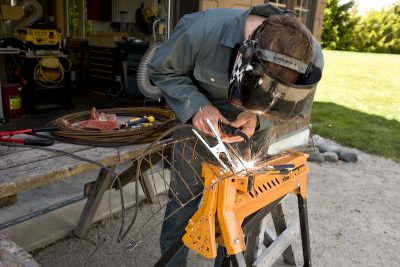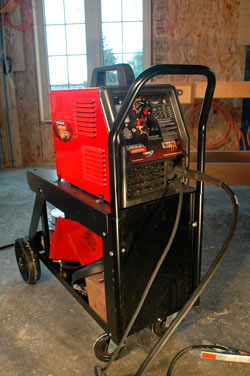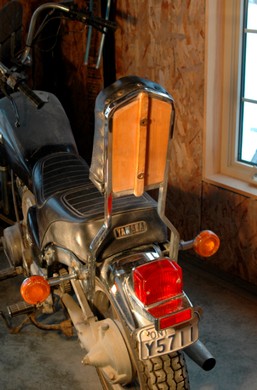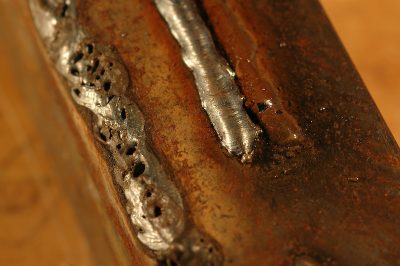UPDATED 25Oct2019 + Video Below: Do you feel the urge to do some welding? Wire-feed MIG welders make it easier than ever to succeed. A little history makes it easy to see the progress.

In 1982 I had the world’s best summer job. Every working day I’d enter the security gates at the back of Canada’s largest theme park – Canada’s Wonderland it’s called – along with hundreds of other high school student employees. But where most of them would turn towards the rides or games or food stands where they worked, I headed in another direction. My job was in the rides maintenance department, working alongside mechanics and electricians who kept the rides running safely. The pay was better than the popcorn jockeys got, but there was an even bigger bonus as far as I was concerned. I was allowed to stay late after my shift and work on metal fabrication projects of my own in the fully equipped metalworking shop. No supervision, no hassles, just hours and hours on my own with industrial-grade tools. My favourite tool at the time was the wire feed MIG welder.

The letters MIG stand for “metal inert gas” and it’s an amazing welding technology that almost anyone can learn to use well. Back then machines like these were made strictly for industrial use, with a whopping size and price tag to match. But I had that wire feed welder all to myself and I used it to build all kinds of things, including the chrome-and-leather backrest and highway pegs on the 750cc Yamaha Virago motorcycle I was customizing. And while untrained, unsupervised 18-year-old kids probably never get the chance to slip so blatantly past the litigation lawyers these days, something even better has happened for those of us with a passion to create.
Affordable wire feed MIG welder tools are now accessible enough for home hobbyists to buy and use successfully. Compact, consumer-grade models retain all the effectiveness of their industrial-grade ancestors. This is what the wire feed welder revolution is all about and it all boils down to a spool of thin metal.
One thing that separates wire feed MIG welders from other more difficult-to-use electric weldering tools is automatic feeding of the welding wire. Press the trigger on the hand-held gun and a strand of fresh wire extends out the tip. And since this wire is electrically energized, a blue arc jumps from the tip of the wire to the grounded work piece you’re welding. This arc generates heat that melts the wire and the surrounding metal. Move the gun along the seam you’re joining and the melting and deposition continues, using up the wire as it extends out of the gun afresh. Bottom line: a nice, neat weld even if you’re not a professional. Excellent results are embarrassingly easy to create.

Besides ease of use, there are three other unique features of wire feed welders. First, they work exceptionally well on thin metal. Traditional stick-type electric welders can be hard to control in applications like these, making it challenging to join thin metal without burning holes through the material.
Another wire feed welder advantage is the ability to weld aluminum. Better-quality DIY wire-feed welders are designed to allow compressed inert gas to be piped through the gun and out of the welding tip during use. This gas shields the molten weld zone from reacting with oxygen, opening a whole new world of possibilities. The use of shielding gases is called MIG welding (shorthand for “metal inert gas”) an approach that can be used on steel and is essential for work with aluminum. Even if you don’t expect to be welding anything other than steel, MIG-capable welders create much neater looking welds than models that can’t operate with a shielding gas.
The third amazing feature of wire feed welders is their efficiency. Although large models must be hooked up to special cables, you can do some pretty serious work with wire feed models designed to plug into nothing more than an ordinary wall outlet.

Ever get the urge to build an aluminum dock for the cottage? Or how about restoring a vintage automobile? Perhaps a decorative steel fence around your backyard pool is on the list for this year’s home improvement jobs? I use my welder all the time for jobs like this and it’s amazing. A wire-feed welder can help you think of metal in a whole new way. And besides, they’re just plain fun.
Click below to see me using my MIG welder to improve a set of tractor tire chains.